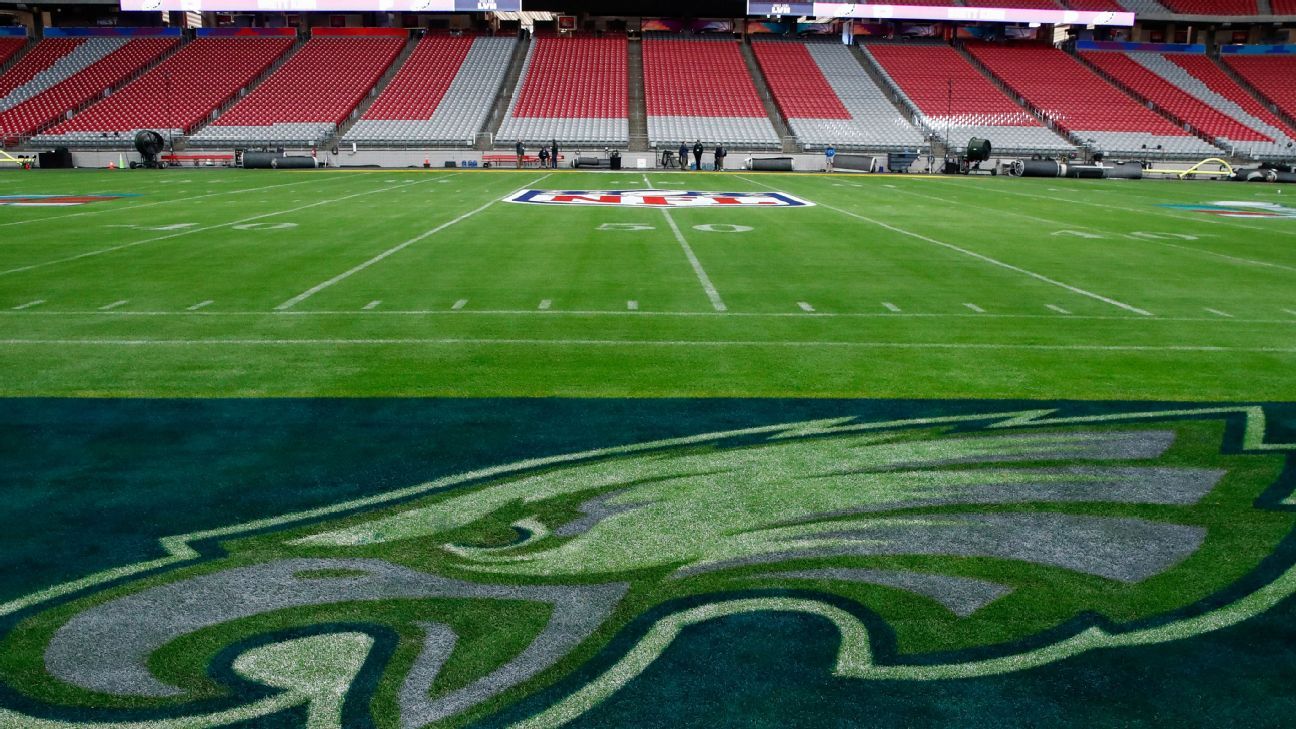GLENDALE, Ariz. — Be warned: When you’re watching Super Bowl LVII on Sunday, you might get the urge to take out your driver for a few swings.
That’s because the grass that the Philadelphia Eagles and Kansas City Chiefs will play on inside State Farm Stadium will be the same turf on which you’d play 18.
The turf is Tahoma 31 and it’s among the newer breeds of grass that have been developed with the funding of the United States Golf Association. Tahoma 31 is a mix of two types of Bermuda grasses and rye grass, and it was developed at Oklahoma State University under the watchful eye of Dr. Yanqi Wu. He started the process of creating Tahoma 31 in 2006, when he crossed China Bermuda grass and African Bermuda grass. A year later, the seeds were harvested and the grass was tested and studied all over the country until 2018.
The result was a grass that’s good enough for the Super Bowl.
It’s a high-quality grass that, compared to other Bermudas, has better tolerances for cold, drought (it uses 10% less water), disease, and wear, and recovers better from traffic, said Cole Thompson, the director of turfgrass and environmental research at the USGA.
For example, normal Bermuda grass would wear out to bare ground after the kind of foot traffic it would face in the leadup to the Super Bowl, said Brian Whitlark, an agronomist in the west region for the USGA. Tahoma 31 won’t have an issue holding up to demands of being a Super Bowl field, he added.
When it was time to pick a sod for the game, Ed Mangan, the NFL field director, needed grass that could withstand a week’s worth of rehearsals for the pregame, halftime and postgame shows.
“With that extra pressure comes extra things that we need to do,” said Mangan, who’s working his 35th Super Bowl. “We can’t call time out and say, ‘Wait, push the game back.’ The game is coming. It’s on this day and it’s going to happen. Kickoff at 4:30 [MST], like it or not, so we have to be ready.”
And the NFL’s turf gurus say they are.
“We believe that, right now, this is one of the strongest varieties of hybrid Bermuda grass you can get,” said Nick Pappas, an NFL field surface director.
The Super Bowl sod was grown in Scottsdale, Arizona, at West Coast Turf, about 45 miles east of State Farm Stadium, Mangan said.
He and his team arrived at State Farm Stadium about four weeks ago and ripped up the Arizona Cardinals’ field, which was made up of Tifway 419, which remains the “gold standard” of Bermuda grass since it was released in the 1960s, Whitlark said.
With the help of about 30 people, more than 600 rolls of sod that were 40-feet long and 3½-feet wide and weigh about 1,600 pounds were laid on the field tray, which can be rolled outside of the stadium to be watered, get sun and treated — and can also be rolled back inside during inclement weather, which has been crucial, Pappas said.
“It kind of unrolls like carpet,” Mangan described, and then laser graded to ensure the turf was smooth.
From there, the field was continually cared for — treated, watered and mowed — and constantly adjusted depending on moisture, dryness and the weather.
When the USGA began working with the United States Department of Agriculture in the 1920s, their joint goal was to work on grasses for golf courses. Then around the 1950s, the USGA’s focus shifted from internal research to external funding.
Since 1982, the USGA has invested close to $50 million into about 800 projects.
“The USGA has been critical for the turf industry,” Pappas said. “Most of the research that the turf industry has done, especially on the sports turf side, a lot of it is drawn from what they research in golf.”
About $50,000 of that money goes to funding the turf grass breeding program at Oklahoma State, which began in 1986.
He might be biased but Wu is confident his creation will “perform well” on Sunday.
“We feel excited,” Wu said. “That’s a very high standard there, so that our grass was selected for that game, we feel excited, honored.”
Whitlark took it one more step further.
“It’s satisfying and gratifying,” he said, “to see a grass that I guarantee it will perform so well on TV.”
